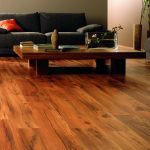What is the Janka Hardness Scale?
 The Janka Hardness Scale determines the hardness of a particular type of wood. The scale was designed by Gabriel Janka in 1906 and it was standardised in 1927 by the American Society for Testing and Materials.
The Janka Hardness Scale determines the hardness of a particular type of wood. The scale was designed by Gabriel Janka in 1906 and it was standardised in 1927 by the American Society for Testing and Materials.
As a rule, the higher the timber is on the number scale, the more durable, harder and scratch resistant it is. The hardness of the timber does not however affect the price of the flooring. That is more so determined by the availability of the material and resource.
Where The Scale Comes From
Gabriel Janka invented the scale as a means for showing the hardness test results. The test uses timber that is 2″ x 2″ x 6″ and a steel ball measuring 0.444″. The measurement determines how many pounds per square inch of force is required to push the steel ball halfway into the timber piece.
What The Scale Looks Like
The Janka Hardness Scale starts at zero, this option would be the softest timber, being easily scratched or dented. There is no timber on the scale that has that rating, as it would likely not make for a suitable household floor. The highest rating on the scale in Australia is the exceptionally hard strand woven bamboo.
How To State The Janka Rating
This can be where the Janka scale begins to confuse most. Measurements of the rating is determined differently depending on the country. For example, in the U.S.A, the rating is recorded in pounds force, in Sweden it is measured in kilograms force, and in Australia, it will be stated in Newtons.
What is A “Good” Janka Rating?
During the process of choosing the flooring suitable for your home environment, having an understanding of the Janka rating scale will give you an indication of how strong the timber floor will be and also the amount of wear and tear it can handle before it requires replacement or repair. It also can play a role in determining the length of time it will hold its appearance. Keep in mind though that it is also the maintenance, traffic and preventative measures taken that can assist in keeping a floor looking well years after installation.
What is A “Bad” Janka Rating?
Low performing or bad Janka rating timbers do not make them suitable for long-lasting flooring. The softer the timber the more susceptible to moisture and damage. Dents, scratches and marks will be more obvious as the timber will struggle to withstand wear and tear of traffic.
Can Harder affect Comfort?
It is important not to relate the hardness to the way the timber will feel under-foot, as there is no bearing on that facet of the flooring. Th Janka scale has no relevance to how soft/hard the floor is in terms of comfort level.
What Does All Of This Mean?
Use the Janka rating to determine the hardness of the wood and as a gauge for whether the timber will stand up to the wear and tear of furniture, children, pets and everyday traffic.




